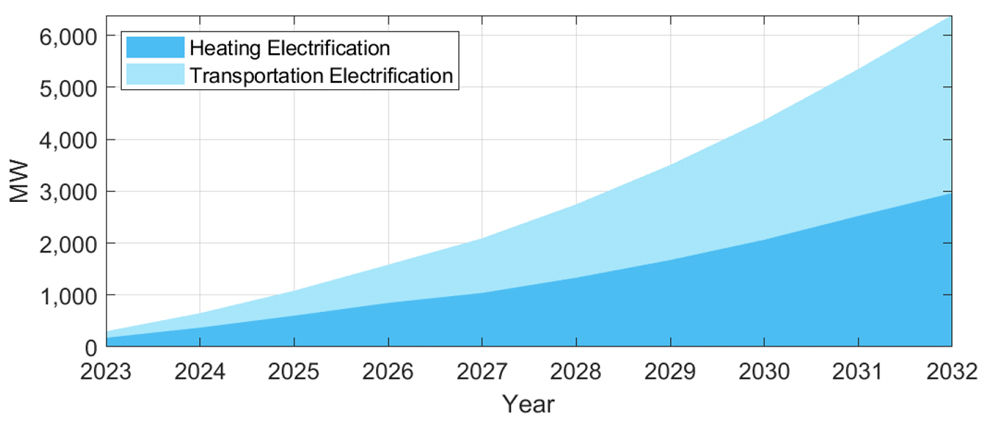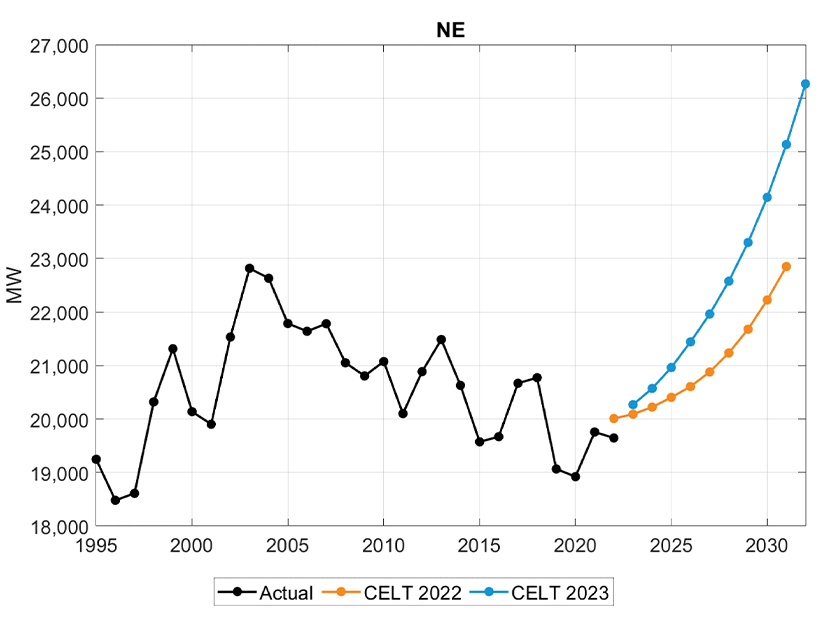HOLYOKE, Mass. — ISO-NE has upped its predictions for summer and winter peak loads over the next 10 years, staff told the NEPOOL Power Supply Planning Committee on Wednesday.
The updated forecasts are part of ISO-NE’s annual Capacity, Energy, Loads and Transmission (CELT) report, which projects electricity demand over the next 10 years. They are used by the RTO to help with transmission planning, determining resource adequacy requirements, evaluating the reliability and performance of the grid, and coordinating maintenance.
The most significant changes for this year’s projections related to updates in the methodology of forecasting electrification across the region, with major increases in the projected demand from electrified heating and transportation compared to the 2022 report.
The RTO boosted its projection for winter transportation demand for 2031 from 1,497 MW to 2,820 MW, while the summer projection increased from 1,082 to 1,927. The 2031 winter heating demand projection increased from 1,831 MW to 2,521 MW.
 The projected increase in demand from electrified heating and transportation. | ISO-NE
The projected increase in demand from electrified heating and transportation. | ISO-NE
For the heating projection, this year’s report looked at electrification within the commercial building sector, which was not included in last year’s, based on extensive data from the National Renewable Energy Laboratory.
The transportation demand increase reflects the myriad new federal, state and local policies aimed at spurring the transition to electric vehicles. The figure was based on input from state regulatory agencies to assess the extent to which nonmandated electric vehicle targets will be met. The modeling assumes all state EV adoption mandates will be met.
The RTO also adjusted its projections to better account for the effect of cold weather on EVs.
“Energy and demand impacts of personal [light-duty vehicles] were revised to more dynamically incorporate the impacts of weather,” said Victoria Rojo, lead data scientist of load forecasting and system planning for ISO-NE.
Peak demand is calculated using historical weather data for the winter and summer weeks with the highest typical demand. The RTO calculates a gross load forecast — which does not account for the impacts of energy efficiency programs or behind-the-meter solar — as well as a net load forecast, which subtracts these factors from the gross load.
ISO-NE increased its winter gross peak demand for 2031 by about 7% compared to the previous report and increased its summer projection by about 2%. The winter net peak projection for 2031 is approximately 10% higher than the 2031 projection from the previous report, while the summer net peak projection is about 5% higher than that from the previous report.
ISO-NE now projects net summer peak demand to increase to 26,505 MW in 2031, compared to the 24,605 MW the RTO projects for this summer. For net winter peak demand, ISO-NE projects 25,133 MW in 2031, compared to 20,269 MW for this winter.
The data indicate that winter peak load will grow faster than summer peak load and that winter peak load could pass summer peak load in the coming years.


